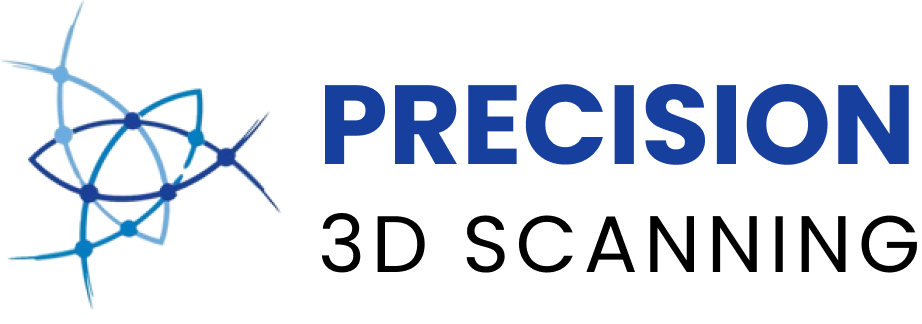In the realm of construction, one fundamental principle stands above all: inclusivity. The Americans with Disabilities Act (ADA) was enacted to ensure that people with disabilities have equal access to public spaces, and it has profoundly impacted the construction industry. The integration of 3D LiDAR scanning technology has emerged as a game-changer, offering an Enhanced ADA Compliance in Construction Through 3D LiDAR Scanning and an innovative approach to meeting ADA requirements and creating more accessible environments. This article delves into the transformative role of 3D LiDAR scanning in achieving ADA compliance and revolutionizing construction practices.
Understanding ADA Compliance
The ADA is a landmark civil rights law that prohibits discrimination against individuals with disabilities in various areas, including employment, public services, and public accommodations. Within the context of construction, ADA compliance entails creating accessible and usable spaces for everyone, regardless of their physical abilities. This involves ensuring that spaces are designed and built to accommodate mobility devices, provide clear pathways, and enable easy navigation. Enhanced ADA Compliance in Construction Through 3D LiDAR Scanning ensures everyone is included.
How 3D LiDAR Scanning Transforms ADA Compliance
Accurate Measurements and Assessments
One of the challenges in achieving ADA compliance is accurately measuring the dimensions of various elements such as ramps, doorways, and corridors. Traditional measuring methods can be time-consuming and may not capture every detail. 3D LiDAR scanning, on the other hand, offers rapid and precise measurements of spaces, structures, and objects. By creating a detailed point cloud representation, LiDAR scanners capture the as-built environment with unparalleled accuracy, ensuring that measurements for accessible features are exact.
Clash Detection and Pathway Analysis
Creating accessible pathways often involves maneuvering around existing structures and infrastructure. 3D LiDAR scanning can perform clash detection, identifying potential conflicts between new accessibility features and existing elements. This proactive approach minimizes design changes during construction, reducing both costs and delays. Pathway analysis data ensures clear and unobstructed paths. This guarantees smooth navigation for individuals with disabilities.
Deviation Heatmaps for Quality Control
One of the innovative features of 3D LiDAR scanning is the creation of deviation heatmaps. These visual representations highlight discrepancies between the as-built environment and the intended design. In the context of ADA compliance, deviation heatmaps can reveal deviations from the specified measurements, ensuring that constructed elements adhere to accessibility guidelines. This technology acts as a powerful quality control tool, preventing potential violations before they become issues.
Iterative Design and Feedback
3D LiDAR scanning facilitates iterative design processes that involve multiple stakeholders, including architects, engineers, and accessibility experts. The ability to virtually walk through the digital twin of a construction site provides a comprehensive understanding of the accessibility layout. Stakeholders can provide feedback, assess potential challenges, and propose modifications in a collaborative manner. This iterative approach ensures that ADA compliance is ingrained in the design from the start.
Future-Proofing for Changing Needs
The needs of people with disabilities can evolve, and construction projects need to be adaptable. 3D LiDAR scanning and digital twins provide a future-proofing advantage. As guidelines and requirements change, property owners can use the digital twin to explore and simulate modifications that align with updated standards. This ensures that spaces remain accessible and relevant over time.
Benefits Beyond Compliance
Social Responsibility
By utilizing 3D LiDAR scanning to enhance ADA compliance, the construction industry demonstrates a commitment to social responsibility. Creating accessible spaces not only complies with the law but also contributes to a more inclusive society where everyone can participate fully.
Cost-Efficiency
3D LiDAR scanning’s precision and efficiency can lead to cost savings in construction projects. The ability to detect clashes early, minimize design changes, and ensure accurate measurements reduces rework, delays, and associated expenses.
Reputation and Public Perception
ADA-compliant spaces reflect positively on construction projects and companies. Organizations that prioritize inclusivity and accessibility foster goodwill in the community, enhancing their reputation and building trust among stakeholders.
3D LiDAR scanning technology has emerged as a potent ally in the pursuit of ADA compliance in construction. Its ability to provide accurate measurements, detect clashes, create deviation heatmaps, facilitate iterative design, and offer future-proofing capabilities revolutionizes the way construction professionals approach accessibility. By integrating 3D LiDAR scanning into their workflows, construction industry stakeholders can not only meet ADA requirements but also create environments that prioritize inclusivity, innovation, and social responsibility. As the industry continues to evolve, the marriage of technology and accessibility promises a future where construction projects are not only built to code but also built for everyone.
Learn more about 3D LiDAR Scanning here: https://en.wikipedia.org/wiki/Lidar
Need help with a project? We can help just make an appointment to speak with a tech: https://precision3dscanning.com/request-a-quote/
#ADAComplianceInConstruction #3DLiDARScanning #InclusiveSpaces #AccessibleDesign #InnovationForInclusion #ConstructionTech #DeviationHeatmaps #PathwayAnalysis #FutureProofingAccessibility #SocialResponsibility #EfficientDesign #InclusiveConstruction #3DScanningBenefits #ConstructionInclusivity #ADAInnovation #EquitableSpaces #PrecisionScanningAnalytics #Precision3dscanning

